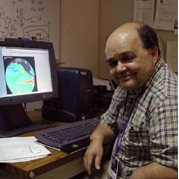Sentinel-3 Satellites: A Three-Sensor Mission to Observe the Physical, Bio-Optical and Biogeochemical Properties of Marine/Water Bodies
A special issue of Remote Sensing (ISSN 2072-4292). This special issue belongs to the section "Ocean Remote Sensing".
Deadline for manuscript submissions: closed (31 July 2023) | Viewed by 25258
Special Issue Editors
Interests: ocean and land remote sensing; satellite radar altimetry; water level; coastal zone; inland waters
Special Issues, Collections and Topics in MDPI journals
Interests: validation of remote sensing data; application of remote sensing to coastal regions; development of new remote sensing for high resolution; validation of remote sensing data sets in challenging areas, including the arctic and coastal regions
Special Issues, Collections and Topics in MDPI journals
Interests: phytoplankton ecology; bio-optics; satellite ocean colour; climate change; coastal oceanography; ecosystem dynamics
Special Issues, Collections and Topics in MDPI journals
Interests: active and passive remote sensing of ocean color; atmospheric correction; inversion techniques for the estimation of biogeochemical parameters
Special Issues, Collections and Topics in MDPI journals
Interests: seawater optical properties; satellite ocean color; field studies; regional algorithms; climatic factors
* Former Guest Editor. He deceased on 28 December 2020.
Special Issues, Collections and Topics in MDPI journals
Special Issue Information
Dear Colleagues,
The Sentinel-3 satellite, as part of the European Copernicus program, is primarily an ocean mission. The Sentinel-3A satellite was launched in February 2016 and has been in routine phase since October 2017. The twin Sentinel-3B satellite was launched in April 2018. During the commissioning phase, the two satellites have been positioned in tandem configuration, separated by 30 seconds. Once Sentinel-3B is operational, it will fly in the same orbit of Sentinel-3A, but 140° ahead. Each satellite carries three main sensors, specifically an SAR radar altimeter, SST radiometer and ocean colour imager, revisiting the same place every 2 days with the two satellites. In this Special Issue we invite contributions highlighting how Sentinel-3 data are improved (technologies, algorithms, etc.) and used (also in combination/synergy with in situ and other satellite missions and/or modelling tools) to contribute to the study/research/monitoring (also operationally) of the ocean from the global to the coastal scale. Of particular interest are also studies addressing synergies between the three Sentinel-3 sensors. Comparative studies made possible by the Sentinel-3A/B tandem phase are also encouraged. Work that seeks to build on the previous records of SST, Ocean Color, and altimetry are also encouraged (especially with ENVISAT). This includes improvements in quality and consistency with applications to interannual and climate scale variability.
Examples include:
- Development of the OLCI regional algorithms for retrieval of the bio-optical parameters in Case 2 waters and their validation using in situ data.
- Joining the satellite data products from OLCI, MODIS and MERIS sensors to build long-term series of bio-optical data and sea surface temperature data. For SST built on the results of the SST special collection, see https://www.mdpi.com/journal/remotesensing/special_issues/SST_RS
- Using OLCI and SLSTR data to estimate the changes in the amount of solar radiation entering the waters of the Arctic sea and analyze the causes and consequences. Use of these products for the validation of SST and Ocean Colour in the Arctic is encouraged.
- Use of the parameters derived from OLCI and SLSTR data as essential climate variables.
- Sentinel-3 radar altimetry for studies on ocean circulation variability, sea level changes, extreme events (storm surges and hurricanes), ocean wave field, assimilation of data in models, etc.
- Sentinel-3 radar altimetry in the coastal zone: progress on waveform modelling and retracking, improvements in corrections (SSB, wet troposphere, tides, etc.); assessment of coastal altimetry; calibration and validation of coastal altimetry data; intercalibration against various missions; applications of coastal altimetry data, including the usage of data from the various providers (e.g., SARvatore, SAR Versatile Altimetric Toolkit for Ocean Research and Exploitation for Sentinel-3).
- Synergy between S3A and S3B for following high-spatial and frequency events over coastal waters and inland seas.
Dr. Stefano Vignudelli
Dr. Jorge Vazquez
Dr. Emmanuel Devred
Dr. Cédric Jamet
Dr. Oleg Kopelevich
Guest Editors
Manuscript Submission Information
Manuscripts should be submitted online at www.mdpi.com by registering and logging in to this website. Once you are registered, click here to go to the submission form. Manuscripts can be submitted until the deadline. All submissions that pass pre-check are peer-reviewed. Accepted papers will be published continuously in the journal (as soon as accepted) and will be listed together on the special issue website. Research articles, review articles as well as short communications are invited. For planned papers, a title and short abstract (about 100 words) can be sent to the Editorial Office for announcement on this website.
Submitted manuscripts should not have been published previously, nor be under consideration for publication elsewhere (except conference proceedings papers). All manuscripts are thoroughly refereed through a single-blind peer-review process. A guide for authors and other relevant information for submission of manuscripts is available on the Instructions for Authors page. Remote Sensing is an international peer-reviewed open access semimonthly journal published by MDPI.
Please visit the Instructions for Authors page before submitting a manuscript. The Article Processing Charge (APC) for publication in this open access journal is 2700 CHF (Swiss Francs). Submitted papers should be well formatted and use good English. Authors may use MDPI's English editing service prior to publication or during author revisions.
Keywords
- ocean color
- inland and coastal waters
- synergy
- radar altimetry
- sea level
- wave
- currents
- SST
- regional algorithms
- long-term series
- solar radiation
- essential climate variables









